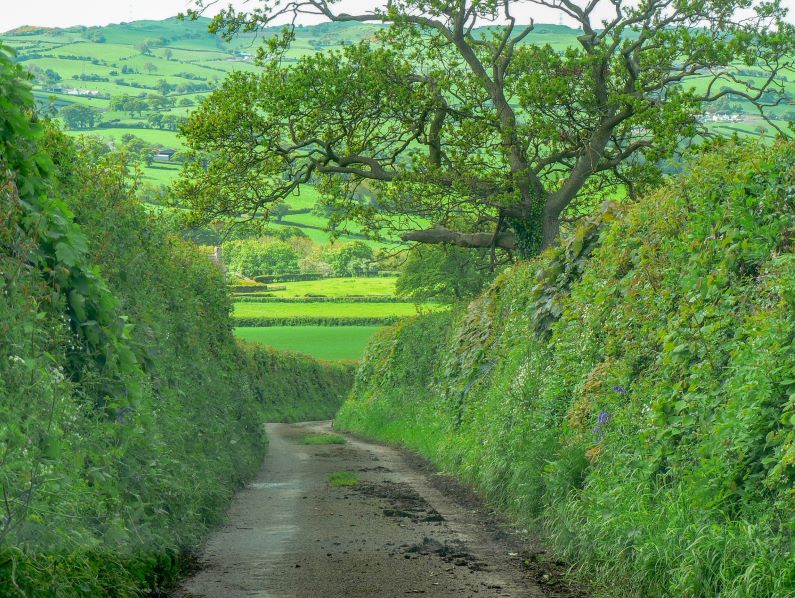How & Why of Hedges
Wildlife Corridors
HEDGEROWS are Wildlife Corridors linking different habitats (woodland, gardens, ponds, rivers, meadows)
- ● Animals can move safely along hedges out of the sight of predators to find food, shelter and a mate.
- ● Thick hedging provides the ideal habitat for nesting - protected and near food sources.
- ● The base of a hedge is ideal for small mammals, lizards, snakes, frogs and toads to seek refuge and find food in.
- ● Insects are the lifeblood of our food chains and pollinate over 87% of our crops. Loss of habitat and use of pesticides means many are endangered and ALL have declined by more than 50% in number in the last 30 years.
Protecting against Climate Change
HEDGEROWS help protect against climate change
- ● Hedgerows capture huge amounts of CARBON, and help provide FLOOD PREVENTION, SOIL PROTECTION, COOLING AND SHELTER FROM WIND AND EXTREME WEATHER.
- ● The roots of hedges hold soil and retain / absorb water - protecting land, roads and housing from flooding and soil erosion. This increases crop yields and protects animals and homes.
- ● Hedgerows are pollution busters: as well as taking excess carbon out of our atmosphere and giving us oxygen, plants (especially trees and hedgerows) absorb atmospheric pollutants help to clean our air.
Public Benefits
PUBLIC BENEFITS of HEDGEROWS
- ● Hedgerows provide visual landscape enjoyment and a sense of wellbeing.
- ● Community engagement in hedge planting and stewardship projects brings people closer together as communities and closer to nature.
- ● Correctly managed hedging can provide timber for tools, furniture, and fuel, plus jobs planting and managing hedgerows.
- ● In season, hedgerows provide nuts and berries for all animals, including humans.
- ● The biodiversity and physical attributes hedgerows can provide are one of the main ways to tackle climate change.
Funding Hedgerows
HEDGE FUNDS
- ● Many different pockets of money are being made available to help with nature recovery: Farming in Protected Landscapes, the Environmental Land Management Scheme and Farming for Net Zero are examples.
- ● These grants acknowledge the key role farmers and landowners play in the stewardship of the land and provision of environmental services. They also acknowledge the financial impact of trying to reduce and recover from the negative aspects of past farming practices and help improve current practices.
- ● Accessing grants is complex and, although some grants enable the employment of contractors, many require the support of volunteers to help identify potential projects and support the land owners in implementing them.
Our Plan
We PLAN TO:
- ● Help to strengthen the existing network of hedgerows in Dorset including in towns and villages as gardens are vital refuge areas for wildlife and a source of biodiversity.
- ● Identify where existing hedging needs improving and best methods to achieve this.
- ● Create an understanding of what a healthy hedge looks like, the value of hedgerows as a key wildlife habitat, their importance in providing protection against climate change and their role as a valuable.
